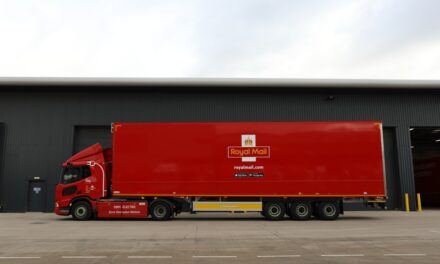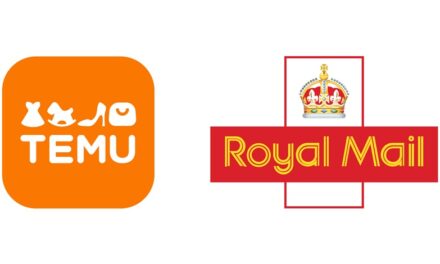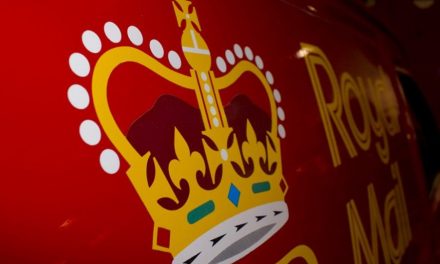
Royal Mail “delivering results” as profits increase 400%
Royal Mail Group is now cash positive for the first time in four years, it said today as it posted full year results for 2012. The UK postal operator said the 12 months up to 25 March, 2012, saw a 4% increase in group revenue, to GBP 9.5bn. Operating profit for the year grew from GBP 39m in 2011 to GBP 211m.
Parcels were the single biggest contributor to revenues, although the parcel network was loss-making in 2012.
Overall, however, Royal Mail’s core business was profitable, with letters, parcels and international mail services turning around last year’s GBP 120m loss to generate a GBP 23m operating profit, even with a 6% decline in traditional letter volumes.
Much of the profitability for the group as a whole in 2012 came from Post Office Ltd and Royal Mail’s international parcel business GLS, respectively GBP 59m and GBP 128m profit.
Overall, not including modernisation costs, Royal Mail Group’s free cashflow reached GBP 234m in 2012, a turnaround from the GBP 213m loss seen last year and the first positive inflow since a similar level was seen in 2008.
Operationally, parcels accounted for 44% of Royal Mail’s group revenues during 2012, with letters and other mail other than direct marketing bringing in 37% of revenues, marketing mail 11% and counter services 8%.
Royal Mail handled more than 58m addressed mailpieces each day in the 2012 fiscal year, down frmo 62m the previous year, and a total of 1.2bn parcels during the year.
The group’s overall operating profit margin during the year, after modernisation costs, did increase from 0.4% to 2.2%, but the company said its margin remained low compared to many other major postal operators. Royal Mail has since increased its retail prices by around 30% and business mail prices by 11%.
One of the big bonuses for the 2012 balance sheet was the absence of last year’s GBP 292m deficit payment to Royal Mail’s pension plan. The company’s legacy pension liabilities, from prior to market liberalisation in 2006, were transferred to the UK government on 1st April. The remaining pension plan for 115,000 active members is fully funded.
“Significant progress”
Commenting on the results, Royal Mail CEO Moya Greene said the company had made “significant progress” addressing its financial problems.
“We are cash positive for the first time in four years, our profitability is improving and we no longer have going concern issues,” she said.
“We have a clear strategy in place and it is delivering results. We are addressing the structural decline in the traditional letters market by improving efficiency across our operations and adapting our network to accommodate the ever-increasing number of parcels being sent.”
Greene said that despite the good progress, there was “much more” to be done in improving efficiency since traditional letter volumes have fallen more than 25% in the last six years, and with parcels increasing their share of the mailstream.
Going forward, the company will be particularly pushing for parcels and marketing mail growth.
The Royal Mail CEO said: “Our commitment to executing our strategies is key. Our increased focus on the parcels market and our growing international businesses is helping to build a strong commercial future for the Group.”
Parcels
Not including Post Office Ltd, which since April is now a sister company to Royal Mail, not a subsidiary, parcels brought in 48% of Royal Mail’s revenue – GBP 4.2bn, including the GBP 1.6bn from the group’s international business, GLS, which saw a 5% year-on-year increase in its revenue.
Yet despite a 6% increase in domestic parcel volumes during the year, and a 10% increase in parcel revenues (to GBP 2.6bn) largely thanks to e-commerce, Royal Mail said its parcel network was loss-making. The company is taking steps to reduce the losses, and said its cost allocation methodology for parcels was under review.
The UK parcels market as a whole has problems at the moment with narrow margins, with most operators stating the need for higher prices.
“We recognise that steps must be taken to grow margin, revenues and volumes and to make the operation more efficient,” the Royal Mail said.
Modernisation
Royal Mail’s modernisation programme is set to continue as the company shapes itself up for privatisation in early 2014.
New delivery methods have been introduced in 448 delivery offices, with 908 operating delivery offices now in the process of being modernised to cope with larger parcel volumes.
The processing network has seen 16 mail centres closed in recent years, with 64 new intelligent letter sorting machines installed to improve automation rates. Greene said Royal Mail was a year ahead of schedule installing walk sequencing equipment, having put in 574 walk sequencing machines.
The modernisation programme has so far seen a 3% reduction in frontline workhours, with 75% of all letters now automatically sequenced into delivery order, up from just 8% two years ago.










![Citizens Advice: We continue to see millions of people chasing lost parcels [and] having their accessibility needs ignored](https://postandparcel.info/wp-content/uploads/2020/12/parcels-440x264.jpg)

